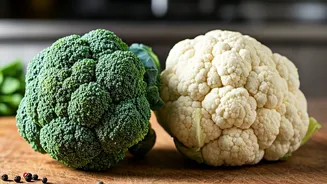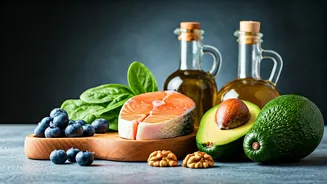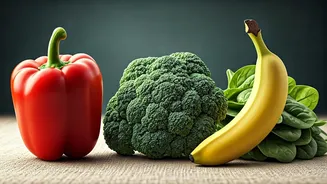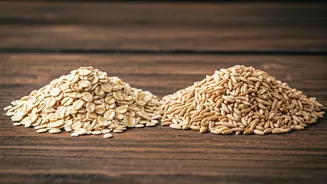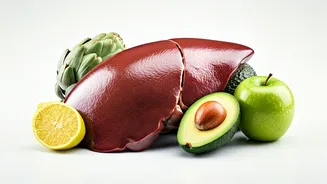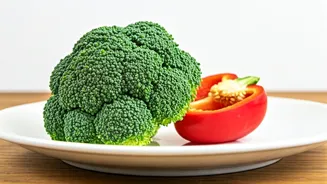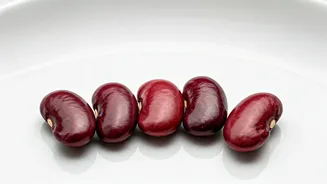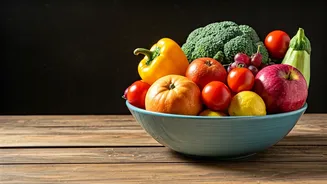Nutrition Showdown Begins
Broccoli and cauliflower, though distinct, are nutritional powerhouses. Broccoli often gets the spotlight, but cauliflower is equally impressive. A single
cup of raw broccoli offers fiber, vitamin C, vitamin K, iron, and potassium. Similarly, a cup of raw cauliflower contains fiber, vitamin C, vitamin K, and folate. The nutritional makeup of each varies slightly, impacting how they contribute to your overall health and dietary needs. Analyzing their nutrient profiles helps determine which suits individual requirements better.
Broccoli: Green Champion
Broccoli, with its vibrant green florets, boasts an impressive array of vitamins and minerals. It's packed with vitamin C, essential for immune function and antioxidant defense. Broccoli also provides vitamin K, which is vital for blood clotting and bone health. Furthermore, it's a good source of fiber, aiding in digestion and promoting gut health. This versatile vegetable can be steamed, roasted, or added to stir-fries, making it easy to incorporate into diverse meals. Regular consumption is linked to reduced risks of certain cancers, demonstrating its powerful health benefits. It is also a good source of folate, which is essential for cell growth and division.
Cauliflower: White Powerhouse
Cauliflower, the creamy-white cousin of broccoli, holds its own in the nutritional arena. It's also rich in vitamin C, contributing to immune support and protecting cells. It contains vitamin K, crucial for blood health, alongside folate, supporting cell growth. Cauliflower offers a considerable amount of fiber, contributing to digestive health and helping to keep you feeling full. Its neutral flavor and adaptable texture make it extremely versatile. It can be transformed into rice, mashed, or even used as a pizza crust substitute. The increasing popularity of cauliflower reflects its health benefits and culinary flexibility.
Cooking Broccoli & Cauliflower
Both broccoli and cauliflower thrive under various cooking methods, each enhancing their unique flavors and textures. Steaming preserves the maximum nutrients, retaining their delicate flavors. Roasting brings out a slightly sweet taste, developing a caramelized texture. Boiling is a quick method but can leach out some nutrients if overdone. Stir-frying, which cooks the vegetables quickly, adds a delightful crispness, while grilling gives a smoky depth. The choice of cooking method should consider your nutritional goals and taste preferences. Experimenting with different cooking styles is the best way to determine your favorite preparations.
Which is Healthier?
Deciding which is 'healthier' depends on individual dietary needs. Broccoli often edges out slightly due to its higher levels of certain vitamins and minerals. However, cauliflower is excellent for those seeking lower-carb options, perfect for keto or low-carb diets. Both are rich in fiber, assisting in healthy digestion and managing weight. Consider your preferences, any dietary restrictions, and specific health goals when making your choice. Both vegetables provide significant nutritional value, making them excellent components of a balanced diet. Ultimately, the best choice is the one you enjoy most.
Easy Broccoli Dishes
Incorporating broccoli into your meals is simple, thanks to its versatility. Try a classic steamed broccoli with a sprinkle of sea salt and a squeeze of lemon juice for a simple side. A roasted broccoli dish with garlic and olive oil elevates its flavor profile. For a heartier meal, combine broccoli with pasta and a creamy sauce. Each method provides different flavors and textures, making it easy to include this green vegetable in your regular menu. Broccoli salads, soups, and even fritters can introduce new and exciting ways to consume the food.
Cauliflower Dish Ideas
Cauliflower’s adaptable nature lends itself to countless creative dishes. Make cauliflower rice for a low-carb alternative to rice in any dish. Cauliflower mash, seasoned with butter, salt, and pepper, offers a delicious alternative to mashed potatoes. Roasted cauliflower with curry powder, cumin, and turmeric provides a flavor-packed experience. Experimenting with various recipes will help you find the cauliflower dishes you love. There are a variety of ways to prepare cauliflower from simple sides to main courses.
Embrace Both Veggies
Instead of pitting broccoli and cauliflower against each other, consider including both in your diet. Enjoying a combination offers a wider range of nutrients and enhances meal variety. Add both to stir-fries, salads, or roasted vegetable medleys. Blend them into smoothies for a nutrient boost, or experiment with recipes that utilize both. Ultimately, the best dietary strategy is one that incorporates a diversity of whole foods, and both vegetables are beneficial. Combining both is a great way to improve one's diet.
